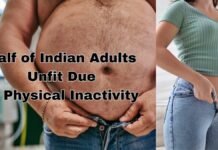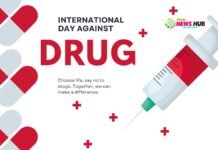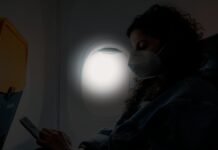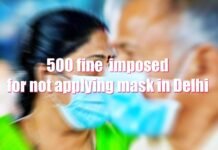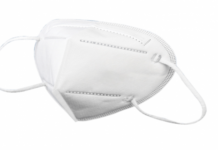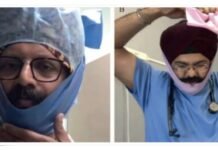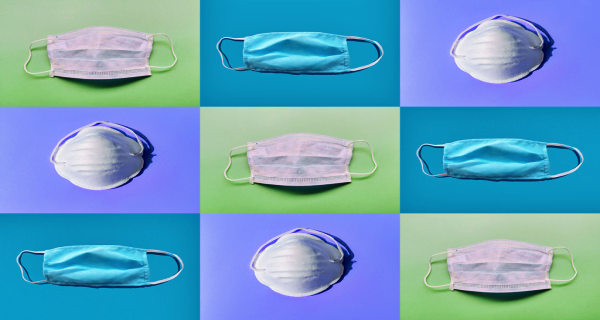
Anjana Upadhyay
Massage ‘Two yards away, mask is necessary’ is telling that at the moment ‘Face Mask’ is a big shield against Coronavirus. The virus has created a huge market for masks. Now you may have accumulated a stock of masks, but do you know how long after you should change your mask and which mask you should wear to completely protect yourself from infection, because knowing this It also became necessary because these epidemics have once started spreading their legs.
Which mask is the most effective
A variety of dresses, surgical and N-95 masks are available in the market. According to a recent study, surgical and cloth masks are up to 70 percent effective. According to medical guidelines, wearing a three-ply mask and a fitted mask is the most effective way to prevent corona. Let you know that after washing clothes and surgical masks, their effect diminishes and they fail to break the chain of infection.

How to clean and store the mask
People have been living in the shadow of the coronavirus for the past one year and according to the order of the World Health Organization, wearing a mask in public is mandatory. Here it is important to keep them clean and tidy. Be sure to keep the mask in a clean place. Hygienic masks are very important for your health. Do not throw the mask anywhere in the house. Choose a place in the room where dirt does not accumulate on the mask. Do not wash them with too many chemicals.
When to change the mask
You have been washing your mask regularly and using it repeatedly for a long time but remember they also have an expiry date. Although it is not certain, it depends on the quality of the mask fabric. It also depends on how long you have been wearing it. For example, if you come in contact with as many people as you can on a daily basis, you need to change the mask as soon as possible. If the mask is torn and the fabric is loose, replace it immediately.
When to put the mask in the trash
- In addition to some of the reasons given above to change the mask, you can also put your mask in the trash for these reasons.
- If you repeatedly adjust your mask on the mouth and nose, it’s time to say bye-bye.
- Check the elastic of the mask. When they are loose, the mask will not cover the mouth and nose well. If this happens then understand to buy a new mask.
- After washing the mask repeatedly, if it is porous or thin, put it in the dustbin immediately.
- If there is a hole in your mask, make no mistake about wearing it again. Whether the hole is small or big, it is better to dispose of it immediately.
How many masks you should have
This can be dangerous for you if you are still wearing your first mask. Try to have two to three masks. Having more than one mask while traveling will benefit your health. In case of sweating, the mask gets completely wet. A wet mask will make it difficult for you to breathe. So it is important that you keep two to three masks with you.Who should not wear a mask
Masks should not be worn by
- Children younger than 2 years old
- Anyone who has trouble breathing
- Anyone who is unconscious incapacitated or otherwise unable to remove the mask without assistance
- Wearing masks may be difficult for some people with sensory, cognitive, or behavioral issues. If they are unable to wear a mask properly or cannot tolerate a mask, they should not wear one, and adaptations and alternatives should be considered
Types of masks
Some masks work better to help stop the spread of COVID-19 outside of healthcare settings. Medical masks and N-95 respirators should not be used because they should be conserved for healthcare worker
- mask considerations disposable mask check
- Non-medical disposable masks
- mask considerations fit snug
Masks that fit properly (snugly around the nose and chin with no large gaps around the sides of the face) - mask considerations bad fit
Masks that do not fit properly (large gaps, too loose or too tight) - Masks made with breathable fabric
Masks made with breathable fabric (such as cotton) - Masks made from materials that are hard to breathe through (such as plastic or leather)
Masks made from materials that are hard to breathe through (such as plastic or leather) - mask considerations tightly are woven
Masks made with tightly woven fabric (i.e., fabrics that do not let light pass through when held up to a light source) - Masks made from loosely woven fabric or that are knitted, i.e., fabrics that let light pass-through
Masks made from loosely woven fabric or that are knitted, i.e., fabrics that let light pass-through - mask considerations multiple layers
Masks with two or three layers - mask considerations single layer
Masks with one layer - mask considerations filter pocket
Masks with inner filter pockets - mask considerations vent mask
Masks with exhalation valves or vents
Cloth masks
The most effective fabrics for cloth masks are
- Tightly woven fabrics, such as cotton and cotton blends
- Breathable
- Two or three layers
- Less effective fabrics for cloth masks are
- Loosely woven fabrics, such as loose knit fabrics
- Difficult to breathe through (like plastic or leather)
- Single layer
- CDC is currently studying the effectiveness of various cloth mask materials. We will update this guidance as we learn more.
Non-medical disposable masks
Disposable face masks are single-use masks. They are sold online and through large retail stores. These are not the same as surgical or other medical masks.
You may prefer using disposable masks in situations where your mask is likely to get wet or dirty. As with cloth masks, make sure your disposable mask fits close to your face without large side-gaps and completely covers your nose and mouth. Bring extra disposable masks with you in case you need to change out a dirty or wet mask.
mask considerations disposable mask no check
Masks with exhalation valves or vents
CDC does not recommend using masks with exhalation valves or vents because this type of mask may not prevent you from spreading COVID-19 to others. The hole in the material may allow your respiratory droplets to escape and reach others. Research on the effectiveness of these types of masks is ongoing.
- mask considerations vent mask
- Surgical masks and respirators
- Do not use surgical masks and respirators that are meant for healthcare workers. Currently, surgical masks and respirators are critical supplies that should be reserved for healthcare workers and other medical first responders to prevent supply shortages.
mask considerations medical masks
Clear masks or cloth masks with a clear plastic panel
Clear masks or cloth masks with a clear plastic panel are an alternative type of mask for people who interact with
- People who are deaf or hard of hearing
- Young children or students learning to read
- Students learning a new language
- People with disabilities
- People who need to see the proper shape of the mouth for making appropriate vowel sounds, e.g., in singing
- mask considerations see through mask
- If you use this type of mask, make sure
You can breathe easily
Excess moisture does not collect on the inside of the mask
You remove the mask before sleeping since the plastic part could form a seal around your mouth and nose and make it hard to breathe
The FDA recently cleared a transparent pdf icon external icon medical mask. These transparent medical masks should be reserved for use by healthcare workers and patients who require them.






























